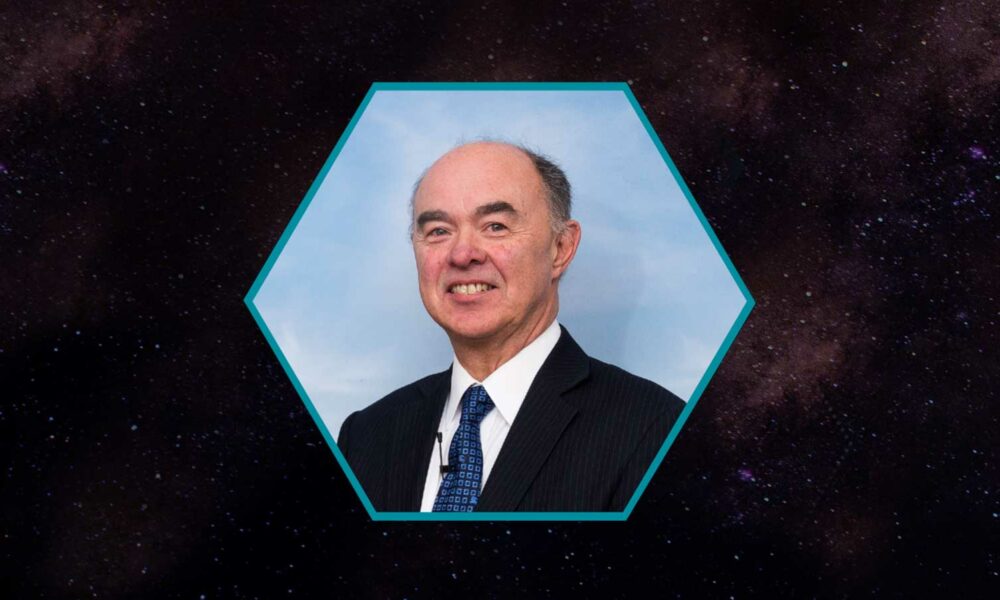
We speak to Professor Sir Martin Sweeting, Executive Chairman of SSTL about the evolution of ideas from university department to global enterprise.
How important is it for universities to be co-located with incubators and research parks to enable the commercialisation of academic ideas?
I believe that it is very important as an effective means for transferring the potential of academic research to industry for commercial exploitation – and in reverse, to raise industry problems or ambitions to academia that might stimulate research.
You launched the University-owned spin-off company, Surrey Satellite Technology Limited (SSTL) in 1985 to exploit the commercial potential of Surrey’s novel small satellites. Sold to Airbus in 2009 and now a multi-million pound business, how important has the Surrey Research Park (SRP) been to your success?
The move of Surrey Satellite Technology from the main University campus to Surrey Research Park significantly increased our credibility as a serious company – and also provided greater and more flexible accommodation. The gravitas of the Surrey Research Park is especially important when engaging with international customers. SSTL originally grew out of the academic Surrey Space Centre and has retained a very close working relationship with it. The proximity of the two organisations has maximised the synergy of academic research with commercial exploitation that enabled SSTL to be highly innovative and lead the field globally in small satellites.
Briefly describe your journey and the growth of SSTL from its inception to the present day.
Many years ago, I was part of a group of researchers working in the Electrical Engineering Department of the University of Surrey. We decided to experiment by creating a satellite using standard consumer technology. The results were surprising. Our first satellite, UoSAT-1 (University of Surrey satellite) was launched in 1981 with the help of NASA. The mission was a great success, outliving its planned three-year life by more than five years. Most importantly, the team demonstrated that relatively small and inexpensive satellites could be built rapidly to perform successful, sophisticated missions.
In 1985, the University formed Surrey Satellite Technology as a spin-out company to transfer research into commercial enterprise. Today SSTL employs around 350 staff, has launched 69 spacecraft, with 11 more under manufacture and is delivering missions that provide critical services to customers across the globe.
The national SPRINT (SPace Research and Innovation Network for Technology), a partnership with the FAIR-SPACE Hub, a national centre of research excellence in space robotics and AI, is based at the University of Surrey. How will this help UK businesses develop new products and services?
Space robotics is a key technology for the next generation of Earth orbiting satellites and the exploration of the solar system. The FAIR-SPACE Hub brings together research groups from six UK universities to develop industrial/commercial applications of their research, covering planetary exploration, astronaut support, cyber security, satellite autonomy and space debris removal. This has stimulated closer links between academic research labs and industry and business, which will place the UK in a stronger position to play a leading role in space exploration and exploitation.
Entering the job market is tough. What advice would you give a graduate looking to start a career in the space sector?
Choose a topic that fascinates you: space is a very challenging and demanding environment and space projects require dedication, imagination and attention to detail – as well as perseverance. If you have those qualities and are fascinated by space, then you have the opportunity to choose from academic research, industrial space manufacturing or down-stream applications companies – both large and small (for example start-ups). It all depends on your appetite for challenge!
The reduction in cost of space travel is making it exciting, when do you think space tourism will become affordable for the masses?
We are likely to see space tourism start in earnest in the next 3-5 years. However, like the early days of air flight, it will initially be expensive and thus limited to rather wealthy individuals. I expect it will take 10-15 years for the prices to come within reach of the larger community.
You have received significant recognition and many awards during your career. What achievement are you most proud of?
I don’t really think about being ‘proud’ of things, as I know it has been achieved not by me alone but enabled by all the people I have worked with over four decades. However, personally, I value the Surrey Satellite Technology community – past and present – comprising all the people who have built SSTL and shown the world what small satellites can achieve.